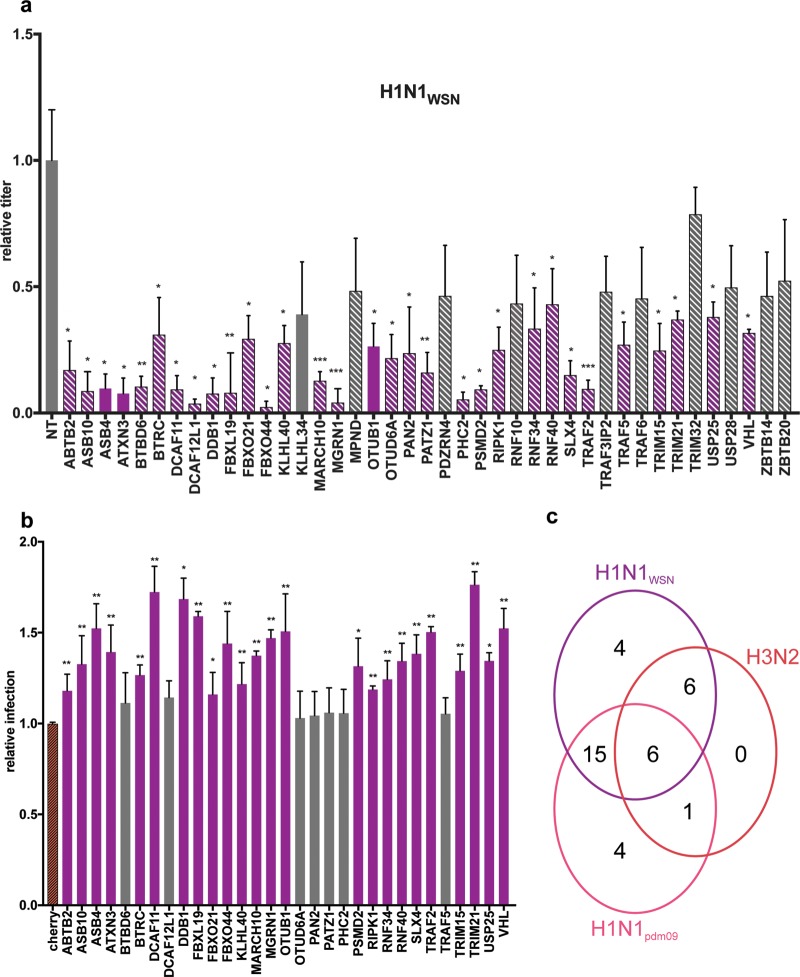FIG 5 .
Functional evaluation of the involvement of the UPS PB2 partners in the multiplication of the laboratory-adapted strain H1N1WSN virus. (a) Effect of siRNA-mediated depletion. A549 cells transfected with nontargeting (NT) or UPS-targeting siRNA for 48 h were infected with H1N1WSN at an MOI of 0.0001 PFU/cell for 24 h. Viral titers were determined by plaque-forming assay and are expressed as ratios relative to the titers obtained with nontargeting siRNAs. UPS factors with statistically significant effects are purple, hatched bars indicate that a PPI with H1N1WSN PB2 was detected, and plain bars indicate that no interaction was detected. (b) Effect of UPS factor overexpression. Plasmids expressing the UPS factors fused to mCherry were transfected into HEK-293T cells. Twenty-four hours after transfection, the cells were infected at an MOI of 1 PFU/cell for 18 h with a reporter H1N1WSN virus expressing the mCitrine fluorescent protein. The percentage of mCitrine-positive infected cells in Cherry-UPS-expressing cells was determined by fluorescence-activated cell sorter analysis and is expressed as a ratio relative to the mCitrine-positive cells expressing unfused mCherry. Data represent the mean ± the standard error of the mean of three independent experiments, and P values were calculated with a two-tailed nonparametric Student t test. *, P <0.05; **, P <0.001; ***, P <0.001. (c) Venn diagram illustrating the number of UPS factors found to be involved in the multiplication of one or several IAVs.

